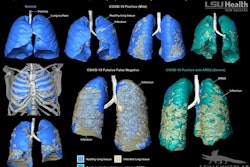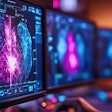Dear AuntMinnie Member,
For years, one of the major barriers to broader use of artificial intelligence (AI) in radiology was the lack of reimbursement. That's starting to change, and a major hurdle was cleared earlier this month with the creation of the first Current Procedural Terminology (CPT) code for a radiology application of AI.
But there are still more rivers to cross, according to an article by Senior Editor Erik L. Ridley that was our most-viewed story of the week. Find out more about these exciting new developments in our Artificial Intelligence Community.
While you're there, be sure to check out this story on the use of an AI algorithm for detecting rib fractures on CT exams, as well as an application that quantifies plaque on coronary CT angiography studies.
Echo for COVID
In other news, ultrasound has demonstrated its value during the COVID-19 pandemic as a useful tool for detecting lung pathologies caused by the SARS-CoV-2 virus. But transthoracic echocardiography is also valuable for predicting mortality risk in COVID-19 patients, Italian researchers have discovered.
And incorporating supplemental automated whole-breast ultrasound for following up women with BI-RADS 3 lesions can reduce recall rates substantially, researchers from Ohio found.
Get these stories and more in our Ultrasound Community.
Special report on spectral CT
Finally, did you have a chance to see our recent special report on spectral CT, "Opening New Doors with Spectral CT?" This special section includes articles on new clinical indications that are possible with spectral CT (also known as dual-energy CT), as well as advances that are being made to smooth out the workflow required to perform spectral CT on a routine basis.



















